Sugar Metabolism
 I hope you’ll want to learn more and let me help you to get into the best shape ofyour life.
I hope you’ll want to learn more and let me help you to get into the best shape ofyour life.
Achieving and maintaining proper blood sugar metabolism is essential for a lifetime of excellent health. Prolonged unhealthy blood sugar metabolism can significantly affect the health of your nerve, eyes, blood vessels, kidneys and pancreas. It can impact your weight, body shape, energy levels, blood pressure, cholesterol, triglycerides, overall cardiovascular health and more. Over 60 million Americans have “insulin resistance”, a form of unhealthy blood sugar metabolism that frequently goes unrecognized, but can often progress to the point where signs of significant health deterioration appear.
Don’t let this happen to you! It is never too early or too late to learn how you can achieve and maintain healthy blood sugar metabolism and experience the benefits of sustained good health.. By understanding how blood sugar metabolism works, and with the guidance of your healthcare provider, you can take the necessary steps to achieve and enjoy the long-lasting benefits of healthy blood sugar metabolism.
Diet, Lifestyle and Healthy Blood Sugar Metabolism
It is import to eat a healthy, nutrient rich diet containing unrefined carbohydrates from whole foods. Through normal, healthy digestion, the unrefined carbohydrates in your diet are progressively broken down to smaller sugars, which are then absorbed through your intestine into your blood. This sugar absorption stimulates your pancreas to secrete an appropriate quantity of insulin into your blood, which facilitates the delivery of sugar into cells throughout your body.
When insulin binds to insulin receptors embedded in the cell membranes, a signal is sent to sugar transport channel vesicles inside the cell. These vesicles respond to the insulin signal by carrying sugar transport channels (“sugar entryways”) to the surface membrane of your cell. The vesicles then fuse with the cell membrane, flatten out and position their sugar transport channels to facilitate effective sugar delivery from your blood into the cell. The sugar then enters the cell and is used for energy production by the mitochondria (the energy factories of the cell), or is stored for future use. The response of the cell to insulin binding, and the resultant insulin signal, is critical to healthy blood sugar metabolism.
Factors That Lead to Unhealthy Blood Sugar Metabolism
Obesity, lack of exercise and an unhealthy diet are considered major contributors to developing poor blood sugar metabolism. When you consume excess sweets and refined or processed foods, the simple sugars they contain are absorbed very quickly and can cause a rapid and dramatic increase in your blood sugar levels. With a high concentration of sugar in your blood, the pancreas responds by producing a proportionally high surge of insulin in an effort to help the sugar gain entrance to the cell. In unhealthy blood sugar metabolism, the cell may be unresponsive or “insulin resistant” and sugar delivery into your cell can be reduced. The pancreas then tries to compensate by producing even more insulin. Over time, these high levels of insulin can lead to a host of problems, including increased triglyceride levels, decreased HDL (“good”) cholesterol levels, high blood pressure, other cardiovascular manifestations and hormone disruption.
This “insulin resistance” may occur because, along with excess sweets and refined carbohydrates, an unhealthy diet is also frequently deficient in the nutrients necessary to support healthy cell membranes, insulin receptors and a strong insulin signal. Unhealthy insulin receptors can result in poor binding of insulin and, in concert with other factors, a diminished insulin signal, thereby reducing sugar delivery into your cell. These other factors include the negative effects of specific enzymes and cytokines, such as phosphotyrosine phosphatases, nuclear factor-kappaB (NF-kappB) and tumour necrosis factor alpha (TNF-alpha).
An unhealthy diet may even alter the way the genetic information within your cells influences blood sugar metabolism. Scientists now know that a poor diet, along with other contributors, can alter your genetic potential or gene expression. Appropriate gene expression is important for healthy blood sugar metabolism because it stimulates sugar utilization by the mitochondria of your cells, producing energy and – in effect – clearing sugar from your blood.
Taken as a whole, excess weight, lack of exercise and an unhealthy diet can reduce the “sensitivity” of your cells to insulin and even impact their genetic expression. Without effective insulin binding and signaling, the sugar transport channel vesicles remain static and unable to travel to and fuse with the cell membrane. As a result, the number of sugar transport channels is reduced, leading to poor cellular sugar absorption and utilization, excess blood sugar and insulin, low energy and a host of other possible manifestations of deteriorating health.
SUGGESTIONS TO HELP ACHIEVE HEALTHY BLOOD SUGAR METABOLISM
Incorporating lifestyle changes that focus on effective weight control, a program of regular exercise and specific dietary guidelines are very important to promoting healthy blood sugar metabolism.
The dietary guidelines should focus on two primary goals: 1) choosing foods that have a moderate effect on raising blood sugar, referred to as “low-glycemic-index” foods, and 2) choosing foods that improve your body’s ability to support the effect of insulin, functionally reducing “insulin resistance”. With the guidance of your healthcare provider, this can be an easy process that results in a healthy and delicious dietary plan.
Nutritional supplementation may also offer great benefit. Your healthcare provider may recommend that you supplement your diet with a combination of macronutrients that include soy protein, special fibers and a low-glycemic-index starch known as high-amylose starch. These help support healthy carbohydrate absorption and blood sugar metabolism.
Supplementing your diet with various fatty acids and micronutrients may also be helpful. These include the essential fatty acids eicosapentaenoic acid (EPA) and docosahexaenoic acid (DHA) to support healthy cell membranes; conjugated linoleic acid (CLA) to promote the insulin signal and gene expression for improved utilization of sugar by the mitochondrion; lipoic acid to further support the insulin signal and sugar utilization by the mitochondrion; vitamin E, inositol and the minerals vanadium, chromium and magnesium to provide additional support to the insulin signal; and biotin to promote sugar utilization by the mitochondria. Other herbs and accessory nutrients may also be helpful.
Take the first step to achieving healthy blood sugar metabolism and sustained good health right now! And begin by reading ‘get fit stay fit’ ‘The best you can be’ and listening to my audio cd’s which are comprehensive, yet tailored to meet your individual needs. You have the power to shape your body for better health.
I know you want to get in shape and look great. Whatever your fitness goal…to slim down…gain muscle…tone your arms or flatten your tummy…I’m here to help you accomplish your goals and to improve your fitness level. If you have enjoyed this article and the many other free features on my site, and would like some more comprehensive information such as fitness books and CD’s to aid you in achieving your health and fitness goals, please visit my ONLINE STORE where you will find innovative natural health and beauty products to help you become the BEST YOU CAN BE !


 The following article is a small excerpt from one of my books. I hope you’ll want to learn more and let me help you to get into the best shape of your life.
The following article is a small excerpt from one of my books. I hope you’ll want to learn more and let me help you to get into the best shape of your life. The following article is a small excerpt from one of my books. I hope you’ll want to learn more and let me help you to get into the best shape of your life.
The following article is a small excerpt from one of my books. I hope you’ll want to learn more and let me help you to get into the best shape of your life.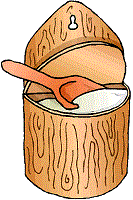 The following article is a small excerpt from one of my books. I hope you’ll want to learn more and let me help you to get into the best shape of your life.
The following article is a small excerpt from one of my books. I hope you’ll want to learn more and let me help you to get into the best shape of your life.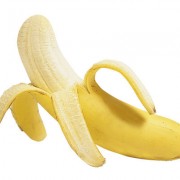 I hope you’ll want to learn more and let me help you to get into the best shape of your life.
I hope you’ll want to learn more and let me help you to get into the best shape of your life.  Depression: According to a recent survey undertaken with people suffering from depression, many felt much better after eating a banana. This is because bananas contain tryptophan, a type of protein that your body converts into serotonin, known to make you relax, improve your mood and generally make you feel happier.
Depression: According to a recent survey undertaken with people suffering from depression, many felt much better after eating a banana. This is because bananas contain tryptophan, a type of protein that your body converts into serotonin, known to make you relax, improve your mood and generally make you feel happier.
 The following article is a small excerpt from my latest audio Cd’s. I hope you’ll want to learn more and let me help you to get into the best shape of your life.
The following article is a small excerpt from my latest audio Cd’s. I hope you’ll want to learn more and let me help you to get into the best shape of your life. The following article is a small excerpt from one of my books. I hope you’ll want to learn more and let me help you to get into the best shape of your life.
The following article is a small excerpt from one of my books. I hope you’ll want to learn more and let me help you to get into the best shape of your life.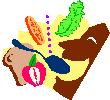 The following article is a small excerpt from one of my books. I hope you’ll want to learn more and let me help you to get into the best shape of your life.
The following article is a small excerpt from one of my books. I hope you’ll want to learn more and let me help you to get into the best shape of your life.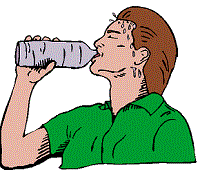 The following article is a small excerpt from one of my books. I hope you’ll want to learn more and let me help you to get into the best shape of your life.
The following article is a small excerpt from one of my books. I hope you’ll want to learn more and let me help you to get into the best shape of your life.
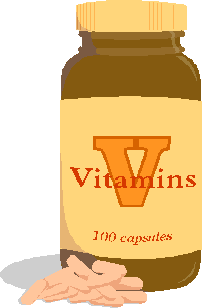 The following article is a small excerpt from one of my books. I hope you’ll want to learn more and let me help you to get into the best shape of your life.
The following article is a small excerpt from one of my books. I hope you’ll want to learn more and let me help you to get into the best shape of your life.